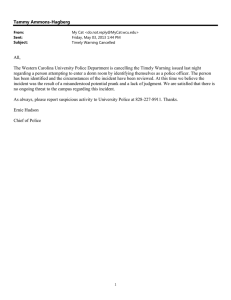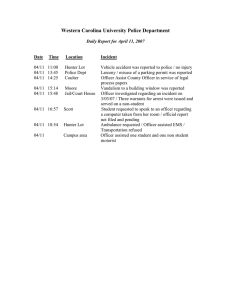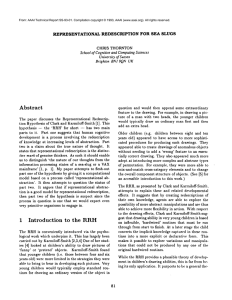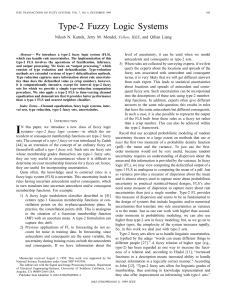1.203J/6.281J/11.526J/13.665J/15.073J/16.76J Logistics and Transportation Planning Methods Massachusetts Institute of Technology
advertisement
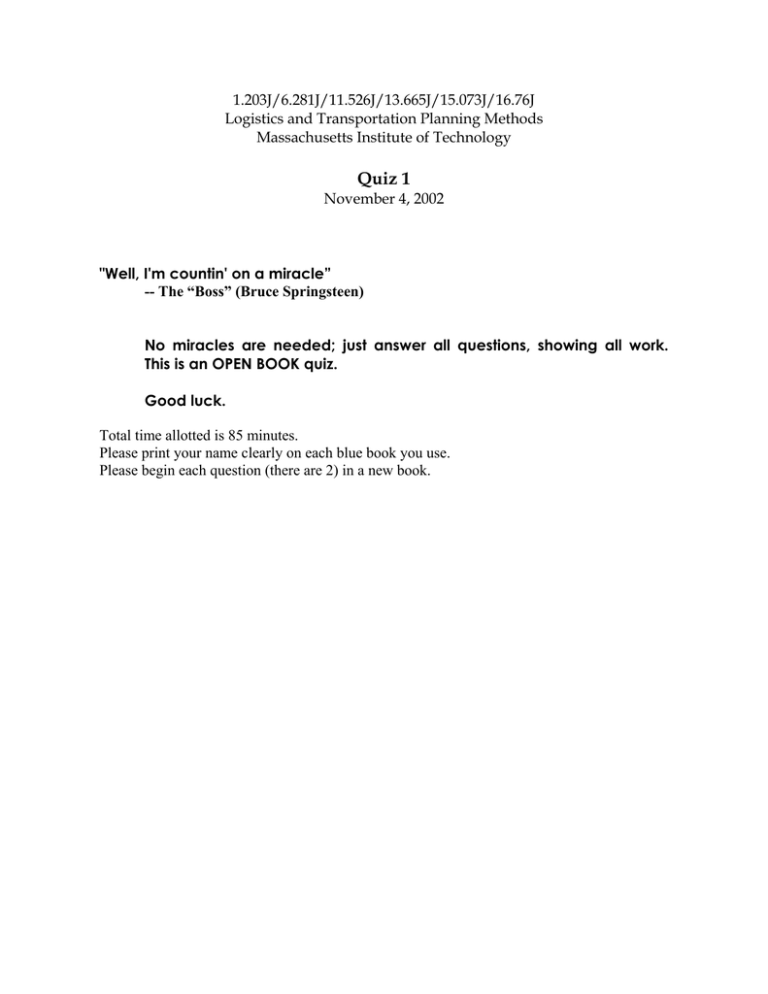
1.203J/6.281J/11.526J/13.665J/15.073J/16.76J Logistics and Transportation Planning Methods Massachusetts Institute of Technology Quiz 1 November 4, 2002 "Well, I'm countin' on a miracle” -- The “Boss” (Bruce Springsteen) No miracles are needed; just answer all questions, showing all work. This is an OPEN BOOK quiz. Good luck. Total time allotted is 85 minutes. Please print your name clearly on each blue book you use. Please begin each question (there are 2) in a new book. 1 Problem #1. 50 points (a) [25 points] Consider the square that is 1.0 km on a side shown in Figure 1. Two points X1 and X2 are uniformly independently located on the perimeter of the square. The location X1 represents a police car and X2 an emergency incident. Travel can only occur on the perimeter of the square. That is, there are no roads internal to the square. (i) Find the probability density function (pdf) for the travel distance between X1 and X2, assuming the police car follows a shortest path on the perimeter of the square and can make U-turns. (ii) Repeat part (a)(i) assuming that the police car cannot make U-turns and must travel only in the one direction that it is currently traveling to reach point X2. (b) [25 points] Now consider the more complex square that is 2.0 km on a side shown in Figure 2. This figure depicts four city blocks, each 1.0 km on a side. Two points X1 and X2 are uniformly independently located on the 12 kilometers of streets of Figure 2 (i.e. they can occur only along the lines drawn in Figure 2, and NOT in the interiors of the city blocks). Again the location X1 represents a police car and X2 an emergency incident. Travel can only occur on the streets of Figure 2. We assume that the police car can make U-turns anywhere and that the police car follows a shortest path. We are given the conditional information that the police car, at the moment of dispatch to an emergency incident, is located randomly (i.e., according to a uniform pdf) on the interior link shown. Find and carefully sketch the conditional pdf for the travel distance from the police car, conditionally located on the link shown, to the emergency incident. (Hint: Systematically use conditioning and explain your work.) 1 km 1 km police car here Figure 1 Figure 2 2 Problem #2. 50 points Two kinds of customers arrive at a single-server queuing system, under independent Poisson processes with rates λ1 and λ2. Service times for all customers are exponential with parameter µ. Initially, there is no priority scheme for handling customers. Assume that µ is large enough that the queuing system is stable. (i) (9 points) If the server has just finished an idle period, what is the average time until he is next idle? (ii) (9 points) What is the probability that the server will handle exactly one customer during a busy period? Now, suppose that type-1 customers get non-preemptive priority over type-2 customers. Under that arrangement, no type-2 customer starts service when there are any type-1 customers present. However, when a type-2 customer enters service, she cannot be interrupted before completion even if a type-1 customer arrives. (iii) (9 points) Under this arrangement, what fraction of the time does the server spend busy? (iv) (9 points) What is the server’s average busy period under this arrangement? (HINT: It doesn’t matter whether the busy period starts with a type 1 or type 2 customer.) Explain. (v) (14 points) Suppose that Mendel is a type-1 customer, and let random variable z be the amount of time he spends in the system while a type-2 customer is being served. Find: Pr(z=0) Pr(z>2) E(z)

